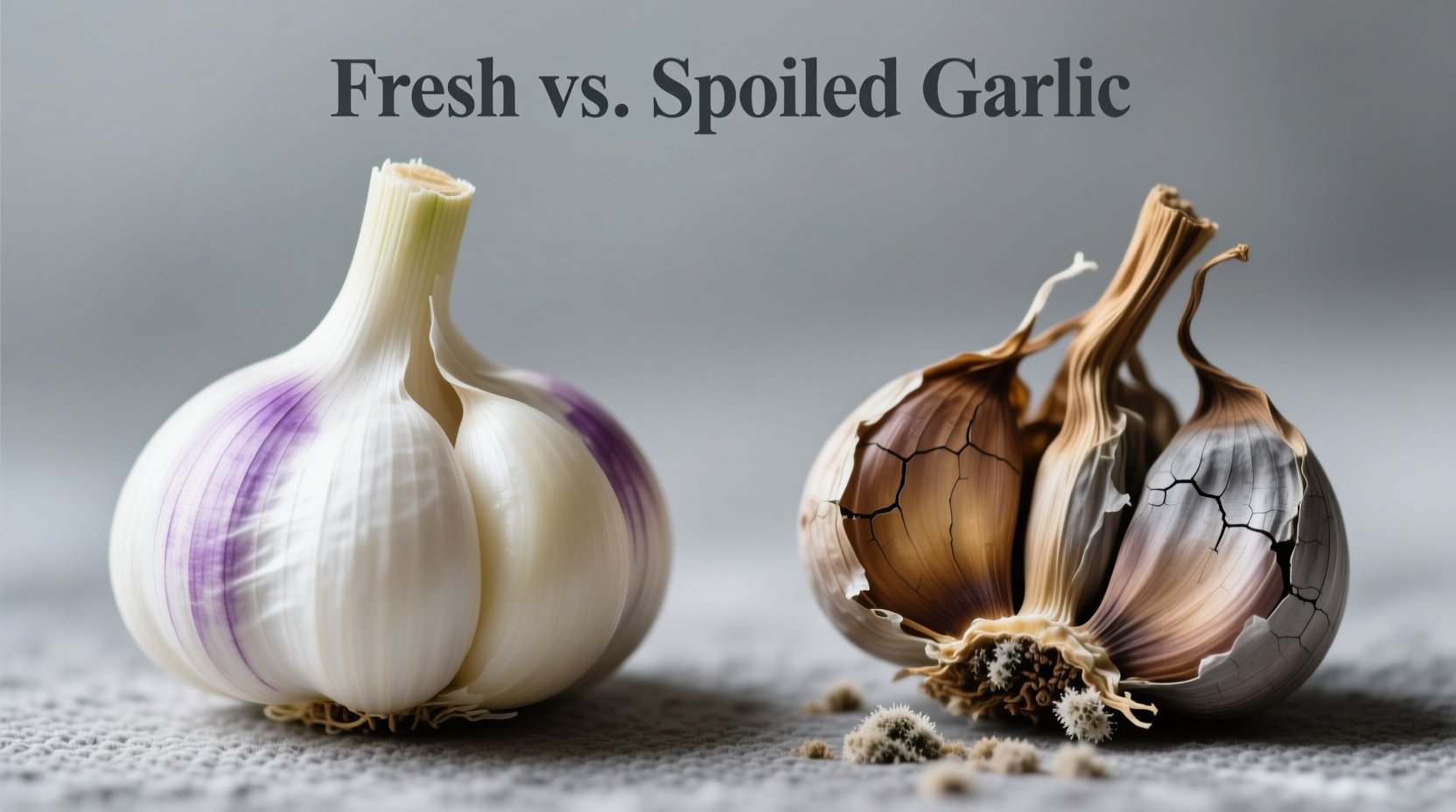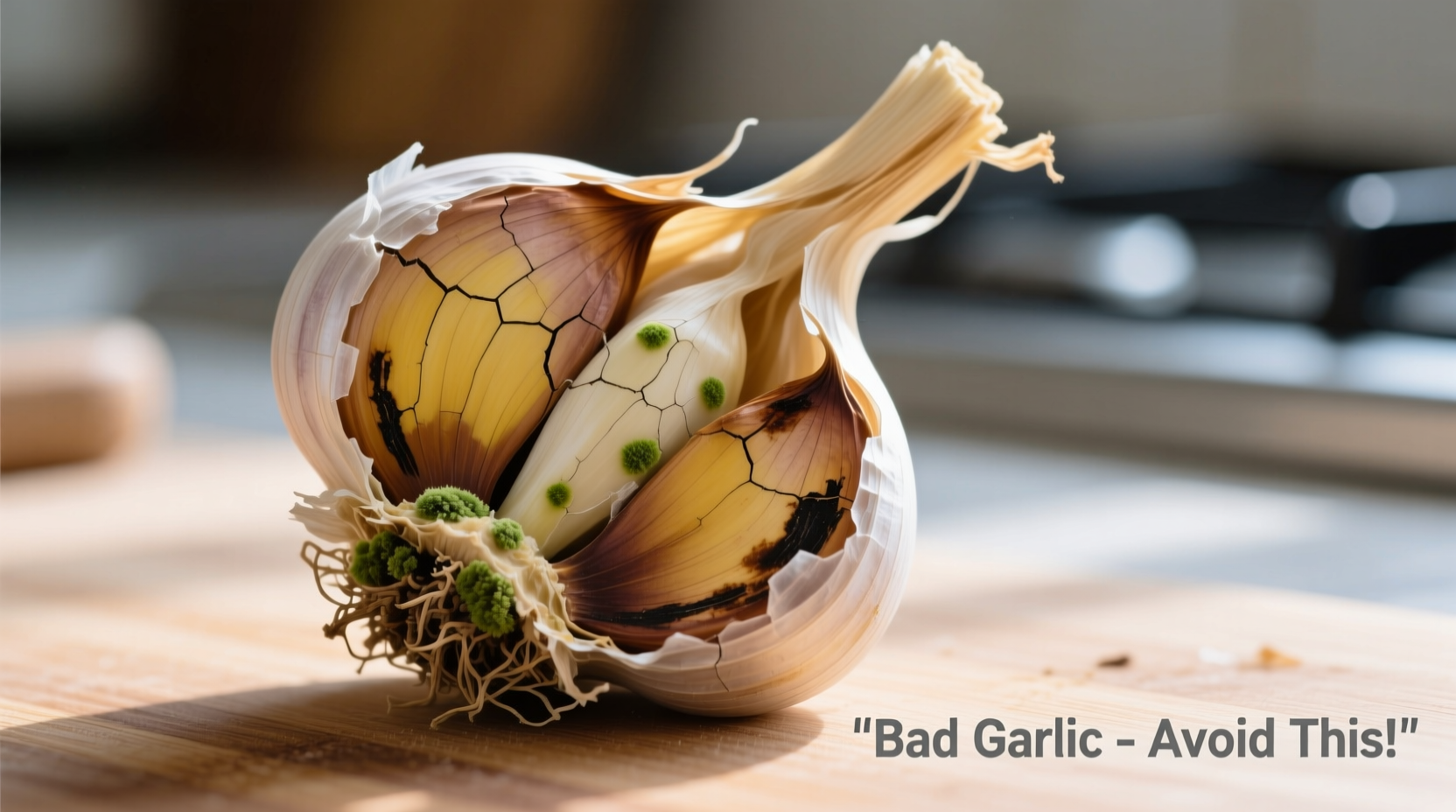Spotting Spoiled Garlic: Your Visual Identification Guide
Knowing exactly what does bad garlic look like prevents wasted ingredients and potential food safety issues. As a chef who's handled thousands of garlic bulbs throughout my career, I've developed a systematic approach to identifying spoiled garlic that goes beyond simple visual inspection.
Key Visual Indicators of Bad Garlic
When evaluating garlic quality, focus on these critical visual markers that indicate spoilage:
1. Discoloration Patterns
Fresh garlic cloves maintain a pure white or off-white color. Bad garlic shows brown or yellow spots that spread across the clove surface. These spots often indicate oxidation or the beginning stages of mold growth. According to USDA food safety guidelines, any significant discoloration beyond the natural papery skin suggests deterioration.
2. Texture Changes
Properly stored garlic should feel rock-hard when squeezed. If your garlic feels soft, mushy, or spongy, it's entered advanced spoilage. This texture change occurs as enzymes break down the garlic's cellular structure. The University of California Cooperative Extension confirms that texture changes are among the most reliable indicators of garlic deterioration.

3. Sprouting Activity
Green sprouts emerging from the clove's core indicate aging garlic. While sprouted garlic isn't necessarily dangerous, it significantly diminishes flavor quality and redirects the bulb's energy away from flavor compounds. Professional chefs typically discard sprouted garlic for premium dishes, though home cooks can remove the sprout and use the remaining clove.
4. Mold Growth
White, fuzzy mold on garlic surfaces signals advanced spoilage. This mold often starts between cloves where moisture collects. Unlike some produce, garlic mold cannot be safely cut away because mold filaments penetrate deep into the clove. The FDA recommends discarding any garlic showing visible mold growth.
| Characteristic | Good Garlic | Bad Garlic |
|---|---|---|
| Color | White/off-white cloves, tan/brown papery skin | Brown/yellow spots, green sprouts, white mold |
| Texture | Firm, hard, dry | Soft, mushy, damp, or shriveled |
| Smell | Mild, characteristic garlic aroma | Strong sour odor, musty smell, or no smell |
| Shape | Plump, full cloves | Shriveled, collapsed, or separated cloves |
Garlic Safety: When Spoilage Becomes Dangerous
Understanding what does bad garlic look like extends beyond quality concerns to food safety. The most serious risk with spoiled garlic involves botulism when garlic is stored in oil. The National Center for Home Food Preservation warns that low-acid garlic in oil creates perfect conditions for Clostridium botulinum growth if not handled properly.
Garlic showing mild spoilage signs like small sprouts or minor discoloration can often be salvaged by removing affected areas. However, garlic with extensive mold, soft spots, or sour odors should be discarded immediately. Remember that garlic flavor compounds degrade as it spoils, resulting in diminished culinary value even if technically safe to consume.
Maximizing Garlic Freshness: Storage Best Practices
Preventing garlic spoilage starts with proper storage. Based on my experience testing various storage methods across professional kitchens:
- Avoid refrigeration for whole bulbs - cold temperatures trigger sprouting
- Store in cool, dark, well-ventilated spaces (55-65°F / 13-18°C)
- Never store in airtight containers - garlic needs airflow
- Keep away from heat sources like stoves or dishwashers
- Do not wash garlic before storage - moisture accelerates spoilage
Properly stored garlic typically maintains quality for 3-6 months. Peeled cloves last about 1 week in the refrigerator, while chopped garlic should be used within 1-2 days. For longer storage, freeze chopped garlic in olive oil - this method preserves flavor compounds better than other preservation techniques.
Practical Assessment: Step-by-Step Spoilage Check
Follow this professional chef's workflow to evaluate garlic quality:
- Visual inspection: Check for discoloration, sprouts, and mold on outer skin
- Squeeze test: Apply gentle pressure - fresh garlic resists compression
- Smell check: Bring close to nose - spoiled garlic emits sour or musty odors
- Cut test: Slice one clove to check interior color and texture
- Decision point: Discard if any major spoilage indicators present
This systematic approach ensures you never waste good garlic while avoiding potentially compromised product. Remember that garlic spoilage progresses rapidly once initial signs appear, so check stored garlic weekly during peak usage seasons.
When in Doubt, Throw It Out: The Chef's Mantra
As someone who's tasted thousands of garlic preparations, I can confirm that using questionable garlic ruins dishes. The subtle flavor compounds that make garlic valuable disappear as it spoils, leaving behind unpleasant bitter notes. When evaluating what does bad garlic look like, trust your senses over arbitrary timelines. Garlic quality varies significantly based on growing conditions, harvest time, and storage history.











 浙公网安备
33010002000092号
浙公网安备
33010002000092号 浙B2-20120091-4
浙B2-20120091-4